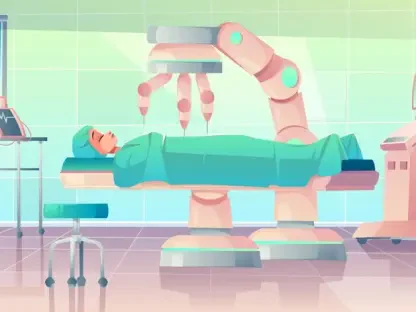The Trump administration’s One Big Beautiful Bill Act has proposed significant Medicaid funding reductions, representing the largest in history and presenting alarming challenges for rural healthcare systems. With estimates suggesting that over 10 million Americans could lose coverage, the ramifications for rural communities are profound. The potential loss of $50.4 billion in federal Medicaid funding over a decade could transform the landscape of healthcare in rural areas, where hospitals are already teetering on financial brinkmanship.
Understanding Medicaid’s Role and Challenges in Rural Healthcare
In order to grasp the full extent of Medicaid’s influence on rural healthcare, it is crucial to recognize its long-standing history as a cornerstone of support for low-income populations. This program has been a vital source of healthcare for many years, particularly in underserved regions where other options are limited. Rural hospitals have long battled against financial instability exacerbated by reimbursement issues and population decline. Since 2025, this crisis has intensified with the closure of 92 hospitals, magnifying the urgency of the current predicament.
Fiscal Implications and Economic Ripple Effects
Financial Sustainability of Rural Hospitals
Rural hospitals function as more than healthcare providers; they are essential economic drivers within their communities. However, almost half of these institutions are currently operating at a loss, with the burden of Medicaid cuts threatening their sustainability. Should these cuts proceed, an estimated 338 hospitals may face closure, imperiling both healthcare access and local economies that rely heavily on hospital jobs. The fiscal health of rural hospitals directly impacts the vitality of entire communities, revealing the far-reaching effects of proposed funding policies.
Medicaid as a Healthcare Bedrock for Rural Communities
Accounting for 18% of adult coverage and 47% of births, Medicaid is an indispensable element of rural healthcare. The contrasting views between those advocating fiscal restraint and those emphasizing healthcare access for vulnerable groups bring to light the complex dialogue surrounding these cuts. States characterized by a high rural Medicaid population face disproportionately dire consequences, as their fiscal capacities may not accommodate the resultant healthcare void. This dynamic illustrates the necessity of Medicaid in maintaining rural health systems’ viability.
Uncovering Regional Discrepancies in Healthcare Challenges
Regional disparities present unique hurdles for rural hospitals, varying significantly across states. Often, misconceptions paint an inefficient picture of rural healthcare systems. However, innovations tailored to specific regional needs, often overlooked, underscore the resilience of these systems. While telehealth and technological advancements hold promise, they demand substantial investment and infrastructure support. Addressing these regional nuances is integral for crafting effective and sustainable healthcare strategies nationwide.
Future Trajectories and Transformative Opportunities
The evolution of rural healthcare is set against a backdrop of technological advancement and policy dynamism. As telemedicine and enhanced rural broadband continue to emerge, they bring potential transformation to healthcare access and delivery. Yet, these innovations rely on supportive policies that promote proactive industry adaptation. The regulatory climate remains a wildcard, capable of either alleviating or exacerbating pressures facing rural healthcare providers. The ability to embrace change and foster adaptability is becoming increasingly essential in navigating future healthcare landscapes.
Strategizing for Sustainable Solutions
Addressing rural healthcare challenges necessitates a range of strategic interventions, from policy advocacy to community-driven initiatives. Stakeholders must focus on mitigating harm through public-private partnerships and technological investments. By acknowledging Medicaid’s critical role, parties involved can implement strategies that emphasize sustainability and resilience. The creation of collaborative frameworks and innovative solutions will secure enhanced healthcare access and economic stability for rural communities.
The potential Medicaid cuts have illuminated broader complexities within the American healthcare landscape, with inherent challenges extending beyond mere funding reductions. While the impact on rural health access and economic vitality is profound, there exists an opportunity for informed action and strategic innovation. The insights derived from this analysis emphasize the imperative of sustaining rural communities through collaborative efforts and transformative strategies. Ensuring the resilience of these healthcare systems invites continued exploration and commitment to crafting effective solutions.









